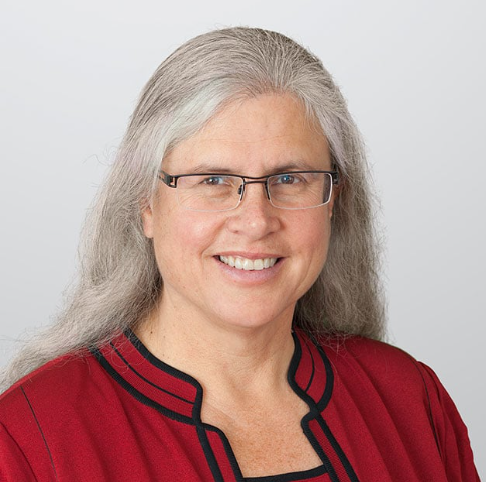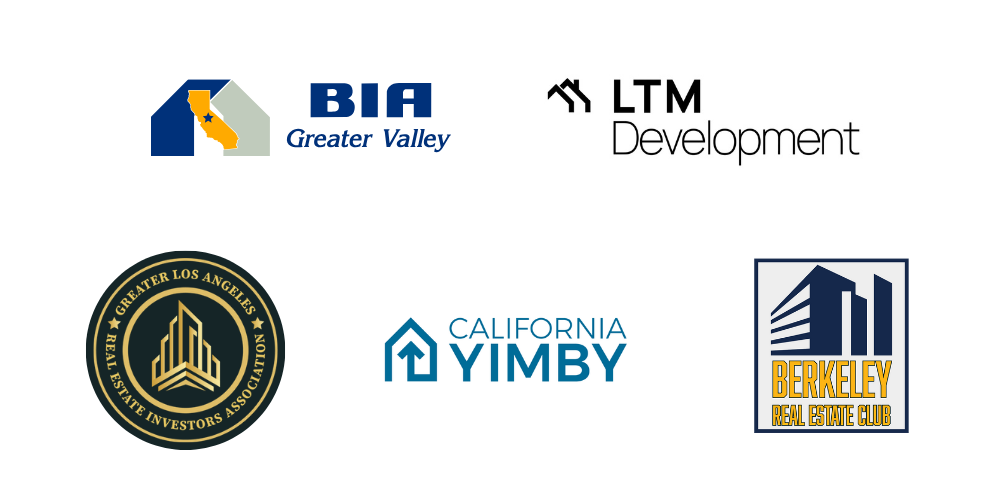SB 9 development symposium
California’s backyard renaissance
The generational development opportunity that addresses California’s housing crisis
The housing crisis is one of the most urgent challenges facing California. Home prices and rents have risen far faster than incomes, pricing out many residents and threatening the state’s long-term economic vitality.
Amid these challenges, new state laws such as SB 9 have opened the door to a more practical solution. By allowing multiple homes on parcels once limited to a single house, these laws make it possible to streamline the creation of new housing within existing neighborhoods.
This symposium, hosted by Sage Credit Investment Partners (SCIP), brought together developers, policy leaders, engineers, and lenders who are already working within these new frameworks. The discussion explored what’s working, what’s still in flux, and how developers can participate in this next chapter of California housing.
SCIP is a private lender for experienced real estate developers and investors, with a track record of financing infill, small-lot, and SB 9/SB 1123 projects. Beyond lending, we aim to serve as a hub for professionals building attainable housing and long-term value across California’s communities.
Watch the SB 9 Development Symposium
This one-hour session brings together experts who are putting SB 9 into practice — from policy drafting to permitting and construction. The conversation covers financing, appraisals, design, and the practical realities of executing small-site infill projects under California’s new laws.
Key takeaways for developers
The panelists shared what they’re learning on the ground about making SB 9 projects pencil — financially, legally, and operationally. These are the key lessons and observations for developers exploring or scaling this type of work.
Infill generates ROI. Four-unit configurations on single-family lots can outperform small multifamily projects on both speed and ROI.
Pick the right city. Outcomes vary widely across jurisdictions. Developers who target pro-implementation cities—those adopting HCD guidance and streamlining small-lot reviews—are seeing faster approvals.
Acceleration ahead. Education, outreach, and legislative cleanup will create a faster path to scalable small-site housing. (Similar to what worked with ADU legislation.)
Where SCIP fits in
As a private lender with experience financing infill development, SCIP supports experienced investors and builders pursuing SB 9 and other small-lot opportunities. We understand the value of these projects and can provide flexible financing with responsive, personalized service. Traditional banks and institutional lenders often don’t understand or underwrite these projects effectively. SCIP fills that gap by offering financing built around the realities of small-scale infill — speed, flexibility, and on-the-ground experience.
Q&A Highlights
The Q&A segment covered the most common and pressing questions from developers and investors around the state — from appraisals and DSCR loans to utilities, modular construction, and city interpretation of SB 9. These summaries capture the key questions discussed. If your question isn’t covered here, get in touch — we’ll connect you with someone who can help.
-
Q: What’s the difference between SB 9, and SB 1123?
A: SB 9 allows two primary homes (and often ADUs) on a single-family lot, with ministerial approval and no public hearing.
SB 1123 is statewide and enables up to 10 units on qualifying single-family lots.Q: Can I demolish an existing home to qualify for SB 1123?
A: Yes, at least in LA — Los Angeles’ new implementation memo allows demolition to build up to ten units under SB 1123. Other cities will likely follow suit as they align their codes. -
Q: What’s the ideal lot size for an SB 9 project?
A: In Los Angeles, look for 6,000 sq ft or larger — but the usable backyard matters more than the total area. Additions and garages can eat up buildable space.Q: Can rear lots be land-locked, or do they need street frontage?
A: You need legal access, but it doesn’t have to front the street. An easement usually satisfies the requirement.Q: Can an HOA block an SB 9 lot split?
A: Yes. CC&Rs and HOA rules are private contracts that supersede state law if they prohibit splitting. Always verify early in due diligence. -
Q: Why do some lenders or appraisers value ADUs so low?
A: That was common before 2021 when ADUs were new. Appraisers now understand them and use income comps; four-unit configurations are increasingly accepted.Q: Can SB 9 projects really outperform multifamily on returns?
A: Yes. If you plan and build efficiently, cash-on-cash returns and ROI can beat multifamily, thanks to faster permitting and strong rent comps. DSCR loans allow refinancing that often returns all initial capital while staying cash-flow positive.Q: Typical cap rates?
A: Stabilized projects can reach 6.5–7 percent in many markets; in high-cost areas, smart site selection can underwrite double-digit returns. -
Q: Why do approvals vary so much between cities?
A: Every new law requires staff retraining. Some cities embrace it — Alameda City approved a four-unit map in 42 days, San Jose and San Diego are improving, and even San Francisco has issued small-lot guides. Pick jurisdictions that are investing in implementation.Q: Who helps when a city doesn’t understand the law?
A: The California Department of Housing & Community Development (HCD) is your friend. They issue technical letters and enforcement memos that can override local misinterpretation.Q: Will permitting get easier?
A: Yes — cleanup legislation is underway to simplify SB 9 and SB 1123 just as ADU rules were streamlined. Expect faster paths and clearer checklists. -
Q: Is there any workaround for the three-year owner-occupancy rule?
A: Some jurisdictions accept tenant-signed affidavits, and others waive it for certain projects. Always check your local policy before closing.Q: Can I build under SB 9 now and lot-split later?
A: Yes — you can construct two units first and subdivide afterward if the SB 9 lot-split provision is still active.Q: Has anything changed for Junior ADUs?
A: Yes. AB 1154 removed the owner-occupancy requirement for Junior ADUs, making it easier to pair them with SB 9 units on R-1 lots. -
Q: How do utilities work for multi-unit SB 9 or 1123 sites?
A: Each split parcel needs its own main connections. LADWP requires separate service lines, and capacity reviews can take 90 days or more — budget and schedule accordingly.Q: Is modular or prefab viable for these projects?
A: Yes. It works best when access, zoning, and factory-built approvals align. Not every site pencils, but it’s a growing option. -
Q:Where can I check if my property qualifies for SB 9?
A: Use the free Riechers Engineering SB 9 Eligibility Tool — it screens zoning, wetlands, and fire zones instantly.Q:Any communities for developers doing this kind of work?
A: Join Micro Development Mastery, our practitioner network for small-lot buildersand investors. It’s a place to share lessons and deal structures.Q:Who can help with lending or capital for my project?
A: SCIP focuses on private credit for experienced infill developers — we finance bridge, construction, and refinance loans for SB 9 and similar projects.
The information on this page is provided for general informational purposes only and reflects a summary of California’s pro-density housing laws, including SB 9. It may not include all requirements or local variations. These materials are not legal advice and should not be relied upon for making development, entitlement, or investment decisions. Readers should consult with a licensed attorney familiar with California land-use and real-estate law before acting on any information described here.
Meet the Panel
Our panel represents a mix of policymakers, attorneys, engineers, and developers who are shaping the implementation of SB 9 and related housing laws. Each brings firsthand insight into how small-site housing is moving from legislation to reality.
Muhammad T. Alameldin
Senior Policy Advisor,
California YIMBY
Leads legislative planning and implementation for SB 9 and SB 1123; offers statewide insights on housing reform and policy impact.
Jennifer Hernandez
Partner,
Holland & Knight
Veteran land-use and environmental attorney; expert on CEQA, lot-split implementation, and housing policy across California.
Jared Jones
Co-Founder,
Middle Housing Partners
Real estate investor and developer with 20 years of experience and over 600 doors built; specializes in scalable, build-to-rent micro-developments.
Gloria Riechers
COO & Partner,
Riechers Engineering
Civil engineer specializing in SB 9 lot splits; has led more than 200 client projects with 80+ approvals statewide using data-driven analysis.
Jan Brzeski – Moderator
Founder & Managing Director,
Sage Credit Investment Partners
Private credit expert with experience originating over 1,800 real estate loans totaling $3.5 billion.
Sal Tabrizi
Founder & CEO,
Rise Capital
Engineer, contractor, and developer delivering high-ROI multi-unit projects on single-family lots across Southern California.
Brian Tesch
Co-Founder,
LTM Development Services
Development strategist bridging policy and practice for ADU, SB 9, SB 684, and SB 1123 projects; experienced in modular and prefab delivery.
Thanks to
Resources & Further Reading
Below are selected resources for developers, planners, and lenders pursuing small-site infill opportunities. These include official state materials, partner tools, and related reading that can help move a project from concept to completion.
SCIP’s SB 9 FAQ »
Our detailed FAQ answers common questions about SB 9 lot splits, SB 1123, financing options, and how SCIP approaches infill lending.
HCD SB 9 Fact Sheet »
Official guidance from California’s Department of Housing and Community Development outlining eligibility, standards, and implementation notes for SB 9 projects.
California YIMBY »
Policy insights, legislative updates, and data from the nonprofit organization leading statewide housing reform—including SB 9, SB 1123, and ADU modernization.
Riechers Engineering SB 9 Eligibility Tool »
Free online tool to check zoning, fire, flood, and other eligibility factors for any California parcel.
Micro Development Mastery »
A peer community founded by Middle Housing Partners for builders, investors, and designers interested in small-lot housing, deal structure, and project execution.
Terner Center for Housing Innovation »
“SB 9 Turns One” — early adoption data and policy analysis.
Holland & Knight Insight »
“California’s Pro-Housing Legislation Explained” — legal breakdowns of SB 9, SB 684, and CEQA streamlining.
California YIMBY Blog »
“Building the Missing Middle” — how gentle density supports affordability and sustainability.
Contact us
If you’re planning an SB 9, SB 1123, or other infill development project, SCIP can help. We provide flexible, relationship-driven financing for experienced developers and investors. Contact us to discuss your next project or connect with others working in this space.










